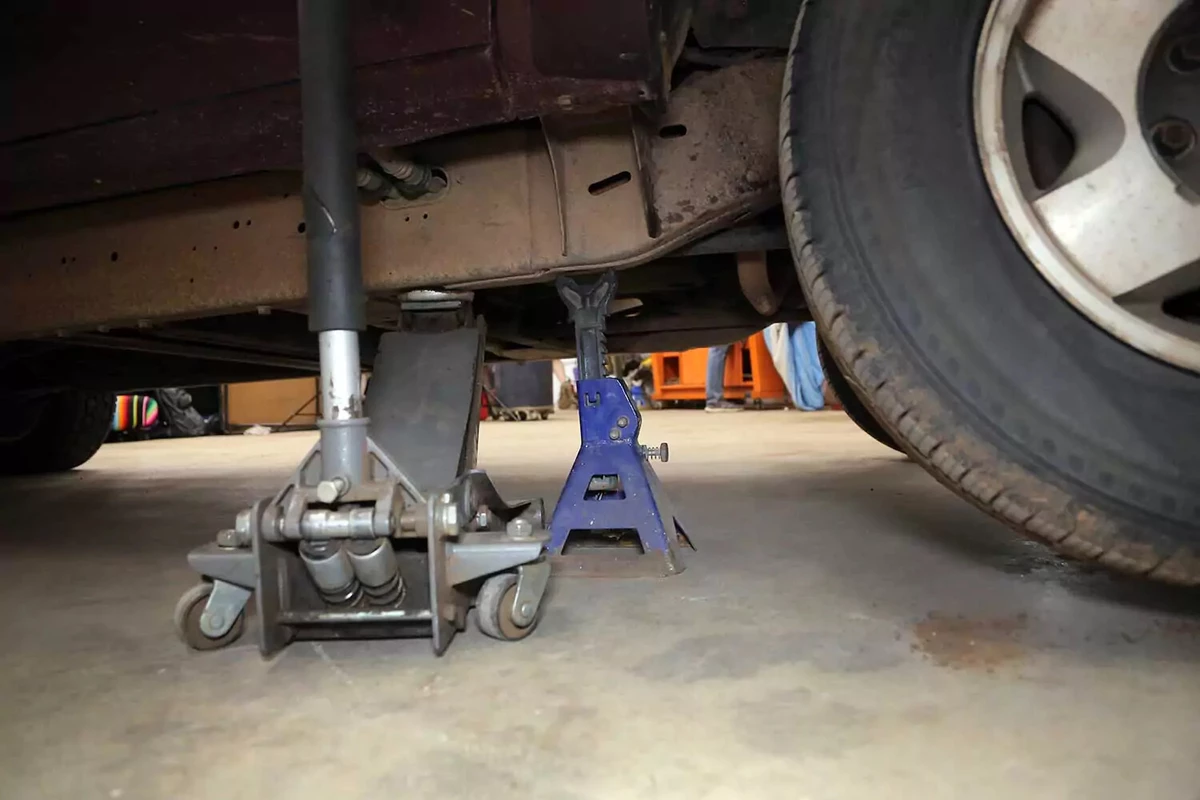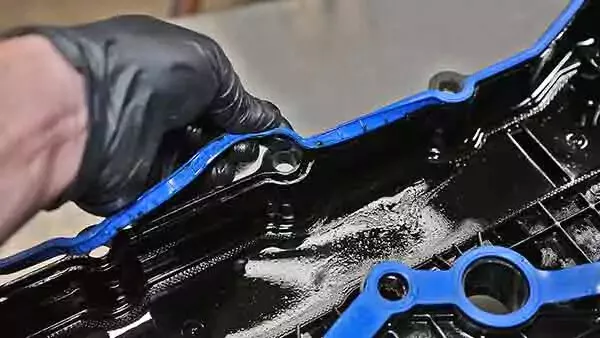Fuel is inherently dirty. A small filter sock that traps debris larger than about 100 microns, roughly the thickness of a human hair, protects the fuel sender in your tank. A 10-micron filter (30-micron for diesel) is used after the fuel pump to trap the smaller particles.
Dirty fuel is bad for your engine, regardless of whether it has a carburetor or fuel injection. Over time, the fuel filter clogs with debris from the fuel tank. Changing your fuel filter every 30,000 miles prevents strain on fuel system components.
How long does it take to replace a fuel filter?
Replacing the fuel filter is a beginner DIY job that usually takes 30 to 60 minutes. For most vehicles, the filter is under the vehicle, centered between the front and rear wheels, although some are closer to the fuel tank. Some vehicles use a filter/regulator combination that filters the fuel and controls the output pressure to the engine.
Safety is paramount when replacing a fuel filter. You will get gas on your hands. Always wear gloves and safety goggles. Have several towels handy, and make sure to keep your face and body away from where the fuel is dripping. To avoid chemical burns, wash any body part that touches fuel as soon as possible. Allow fuel to evaporate from your towels and rags before properly disposing of them.
Tips and tricks for DIY fuel filter replacement
- Most automakers now use nylon or plastic retainer clips that require a special tool to release the fuel line from the filter. These fuel filter removal tools come in different designs. Kits that include all styles of fuel filter clip removers are available.
- If your vehicle doesn’t use clips, your fuel filter is likely retained by threaded fittings. This is the most common style for older vehicles.
- If your vehicle has threaded fittings, you’ll need a set of line wrenches, also called flare nut wrenches. A line wrench is like a box-end wrench with a notch cut out so it can slide on fluid hard lines. Open-end wrenches only grab the fitting on two sides, which can round off the hex edges. A line wrench is the best tool for the job because it contacts the fitting on all sides, reducing the chances of rounding off a fitting.
- Vehicles with low-pressure fuel systems or older electronic fuel-injection systems have spring or worm-gear clamps on the fuel lines. You can remove them with pliers (or a spring clamp tool for spring clamps) or a socket or flat blade screwdriver for worm gear clamps.
- Some vehicles have flexible rubber lines that can be clamped to minimize fuel spillage. Our demo vehicle has solid hard lines, so we had more fuel spillage. Perform this job quickly after the fuel lines are opened.
- Many current-production vehicles have no serviceable filter, just the one inside the fuel tank.
- Diesel fuel filter replacement often involves changing multiple, larger filters.

This project requires working safely under the vehicle. You will need a floor jack, and jack stands, ramps, or wheel cribs to support the vehicle.
Locate the factory jacking points just behind the front wheels or just in front of the rear wheels. The jacking point is a metal section with two V notches about two inches apart. Check your owner’s manual to confirm the lift location.
Never use jack stands on dirt, gravel, or asphalt. If you do not have access to a concrete work surface, use wheel cribs, solid-base ramps, or wide-base wood supports to support the vehicle. Never use cinder blocks or bricks as supports.

Look under the vehicle for your fuel filter, or consult your vehicle’s repair manual to find its location. Sometimes, the filter is hidden by a trim panel. Most fuel filters, like the one shown here, have two or three fuel lines attached.

Our filter has threaded fittings, so we selected the correct wrench sizes. The larger open-end wrench is for the hex on the filter, while the line wrench is for the fuel line fitting.
A line wrench is like a box-end wrench with a section cut out. Because it grips the fitting at six places instead of two, it’s less likely to round off the fitting. It’s used for fluid lines that open-end wrenches can round off. They also work well on brake lines.

If your vehicle’s filter is held in place by retainer clips, you will need one of the fuel filter release tools pictured here. The exact tool varies by manufacturer, so verify the kind you need in your vehicle’s repair manual.
A master removal tool kit is not costly. If your vehicle uses these for the fuel lines, it probably uses them for transmission fluid lines and some cooling system hoses.

With tools in hand, carefully loosen one side of the fuel line. If you start on the fuel tank side, quickly remove the line and cap it to reduce fuel spillage.
Most vehicles hold pressure in the fuel system for hours, even days, after being run. When the lines are loosened, a brief spray of pressurized fuel may be released from the fittings. After applying the tools, wrap a towel around the fittings to catch sprayed fuel in the towel (and avoid it spraying on you).
If your engine has a fuel pressure test port on the fuel rail, which looks like a tire valve, you can place a towel underneath the valve and press the center pin with a small flat-blade screwdriver to release the pressure before removing the lines.
For vehicles with retainer clips, insert the tool behind the fitting, press toward the filter, and hold the tool in position. With your other hand, pull the fuel line out of the fitting.

After the pressure has escaped, unthread the fitting from the filter by hand. Some fuel will spill, so be prepared with towels. Don’t pull the line yet.

Using the same wrenches, loosen the fitting from the filter.

With a towel in hand, push the filter away from the fuel tank line, separating the line from the fuel filter. Then, pull the filter off the engine-side line.

To minimize fuel spillage, cover the fuel tank line with a silicone cap. If you don’t have one, you can use a short piece of fuel line with a bolt in it.

Check the markings on the new fuel filter to verify the flow direction. Avoid installing it backward, which will produce higher fuel pressure. This could damage the pump, filter, and possibly the engine.

Slide the new fuel filter into the mount (if so equipped).
Some filters are secured with a strap and bolts, while others, like the one shown here, slide into a plastic ring mount. Some vehicles don’t have a filter mount.

Remove the cap and install the fuel tank line to the filter. Thread the fitting in hand tight. Then, install the engine-side line.
You can do this in any order, although sometimes you have to do one first and then the other, depending on the available movement in the lines. Our demo vehicle had a static hard line for the tank, but the engine-side line had more room.

Use wrenches to tighten the fittings on the fuel filter until they are snug and not leaking. They should be snug but don’t overtighten. Tightening them too much can strip the threads or damage the sealing surfaces.
Clean up the area, dispose of the filter properly, and let your towels dry before washing them.
Note the mileage when you replace the filter.
Before starting the engine, turn the key to the run position and inspect the filter to ensure there are no leaks. If you have a push-button starter, push the button twice, but don’t depress the brake pedal.
It may take a couple of extra seconds for your vehicle to start after changing the filter.
Share your feedback
This article is meant to provide general guidance only. Automotive maintenance, repair, upgrade, and installation may depend on vehicle-specifics such as make and model. Always consult your owner's manual, repair guide for specific information for your particular vehicle and consider a licensed auto-care professional's help as well, particularly for advance repairs.

















































































